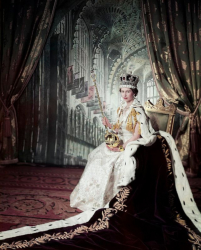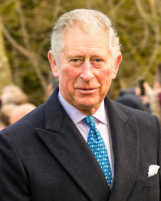





Docklands and the Thames,
Victoria Park to Paternoster
Square. Take a nostalgic
trip back to the East End in
the 1950’s or a stroll around
the Square Mile of the City
of London. It’s all here at
barryoneoff.co.uk
Copyright 2002 - 2024 ©Barry Carter. All rights reserved
THE MONARCHY (2)
William IV 1830 - 1837:
Third son of George III. He was in the Navy
for 10 years so became known as the ‘Sailor
King’. Before he became King he lived with an
actress and had ten children with her! He
married Adelaide of Saxe Coburg in 1818. He
had two daughters who both died. During his
reign slavery was abolished in 1833. The
Reform Act was passed in 1832.
Queen Victoria 1837 - 1901:
Only child of Princess Victoria of Saxe-
Coburg and Edward Duke of Kent, fourth son
of George III. Victoria inherited an unpopular
throne. Her Hanoverian uncles had not been
popular. In 1840 she married her cousin
Albert. He had much influence over the
Queen and until he died made most decisions
on the running of the country. He left two
legacies to to Britain, the Christmas Tree and
the Great Exhibition of 1851. Profits from the
exhibition helped to fund the Victoria and
Albert Museum, the Science Museum,
Imperial College and the Royal Albert Hall.
After the death of Albert in 1861 the Queen
went into mourning and shunned public life
until her Golden Jubilee in 1887. The British
Empire double in size and in 1876 she was
made Empress of India, the ‘Jewel in the
Crown’. Victoria died in 1901 and the British
Empire had reached it's highest point. She
had nine children, 40 grand-children and 37
great-grandchildren.
House of Saxe-Coburg-
Gotha
Edward VII 1901 - 1910: A very popular king. He loved horses, gambling and women. Edward had all the social graces and sporting interests. His horse, Minoru, won the 1909 Derby. He married Alexandra of Denmark in 1863. They had six children. Their eldest son, Edward Duke of Clarence, died in 1892. When Edward died in 1910 Queen Alexandra allowed his mistress, Mrs. Keppel, to say goodbye at his bedside. Another well known mistress of the king was Lillie Langtry.House of Windsor
George V 1910 - 1936: George did not expect to be king. When his brother died he was next in line. He became a Navy cadet in 1877. He was at home on the sea. In 1893 he married Princess Mary of Teck, who was his dead brother’s fiance. He had a difficult reign, with World War One in 1914 to 1918 and the Irish problems which lead to the forming of the Irish Free State. In 1932 he gave the first the royal Christmas broadcasts. In 1935 he celebrated his Silver Jubilee. A worrying concern to him was the romance between the Prince of Wales and Mrs. Simpson. Edward VIII June 1936: Edward an immensely popular Prince of Wales with the people. Consequently when he abdicated to marry Mrs. Wallis Simpson the country was deeply upset. The poulation knew nothing about Mrs. Simpson until 1936. Mrs. Simpson was an American divorcee and had two husbands still alive. The Church refused to accept that Edward wanted her crowned with him at the Coronation. He abdicated and became Duke of Windsor. He moved abroad.
William III 1688 - 1702 and Queen Mary II
1688 - 1694:
On the 5 November 1688, William of Orange
turned up with over 450 ships, sailing into
Torbay harbour. He marched his 20,000
strong army into London "The Glorious
Revolution" was here. Many of James II’s
army supported William, as did James’s other
daughter Anne. William and Mary reigned
jointly. Mary died in 1694. James tried to
regain the throne in 1689 but William
defeated him at the Battle of the Boyne and
James fled back to France as guest of Louis
XIV.
Queen Anne 1702 - 1714:
Second daughter of James II. She had 17
pregnancies but only one child, Willism, who
died of smallpox aged 11. She was 37 years
old when she succeeded to the throne. She
was a staunch prodestant. During her reign
the United Kingdom was created by the Union
of England and Scotland
House of Hanover
George I 1714 - 1727: Great grandson of James I. 54 year old George came to England with 18 cooks and 2 mistresses! He never learnt to speak English, so the government was left to sort of rule. Sir Robert Walpole was Britain’s first Prime Minister. In 1715 the Jacobites, supporters of James Stuart, tried to replace George but failed. George spent much time in Hanover. He was implicated in the South Sea Bubble scandal of 1720. George II 1727 - 1760: Son of George I. He spoke more English, but relied on Sir Robert Walpole to run things. He was the last English king to lead an army into battle at Dettingen in 1743. In 1745 the Jacobites again tried to get a Stuart to the throne. Prince Charles Edward Stuart, Bonnie Prince Charlie landed in Scotland. He beaten at Culloden Moor by Duke of Cumberland, known as ‘Butcher’ Cumberland. Bonnie Prince Charlie escaped to France with the help of Flora MacDonald, and died as a drunkard in Rome. George III 1760 - 1820: Grandson of George II, he was the first English born monarch since Queen Anne. His reign was the age of some great names in English literature. It was also the time of great historic figures like Pitt Wellington and Nelson. in 1773 the ‘Boston Tea Party’ was a sign of the troubles to come in America. The American Colonies proclaimed their independence on July 4th 1776. George suffered from a mental illness caused by intermittent porphyria and became blind and insane. From 1811 his son ruled as Prince Regent. George IV 1820 - 1830: The First Gentleman of Europe. He loved art and architecture but his private life was a disaster. in 1785 he secretly married a catholic, Mrs. Fitzherbert, and in 1795 married Caroline of Brunswick although Mrs. Fitzherbert remained the love of his life. He and Caroline had one daughter, Charlotte in 1796. She died in 1817. George was a great wit but also a buffoon. His death was a relief.
George VI 1936 – 1952
George had very bad stutter, which made him
somewhat nervous and shy, unlike his brother
the Duke of Windsor. He was more like his
father George V. He was popular with the
people. Feelings toward the monarchy were
low when he came to the throne, but his wife
and mother stood firmly behind him.
World War II began in 1939 and he and his
wife Elizabeth remained at Buckingham
Palace for the duration of the war despite the
bombing. The Palace was bombed more than
once. Daughters, Elizabeth and Margaret,
spent the war years at Windsor Castle.
George kept in touch with his Prime Minister
Winston Churchill throughout the war After the
war there were many social changes
including the start of the National Health
Service and the Festival of Britain in 1951,
100 years after the Great Exhibition during
Victoria’s reign. He died unexpectedly the
following year.
Queen Elizabeth II 1952 - 2022:
Elizabeth Alexandra Mary, or ‘Lilibet’ to family
was born on 21 April 1926. She was to
become the longest reigning monarch serving
70 years on the throne. I was 5 years old at
her coronation in 1953 but I remember being
on my dad's shoulders as the car went by and
saw her waving at the crowds. She had
served in the Auxiliary Territorial Service,
training as a driver and mechanic. She
married her cousin Philip and had four
children: Charles, Anne, Andrew and Edward.
George VI died She became Queen of seven
Commonwealth countries. The coronation in
1953 was the first to be televised. She was a
popular queen but faced much turmoil and
scandal with the death of Princess Diana and
the behaviour of sons Charles and Andrew
and later, grandson Harry.
Three months after celebrating her Platinum
Jubilee in June 2022 Queen Elizabeth II died
at Balmoral on 8th September 2022 at the
age of 96
.
Charles III - 2022 - Present:
Charles came to the throne at the age of 73,
his wife Camilla became Queen Consort. He
was the oldest royal to succeed to the throne.
I cannot say anything about his reign as he
has only been king for a few days at the time
of this update.



Photo credit: Wikipedant
















